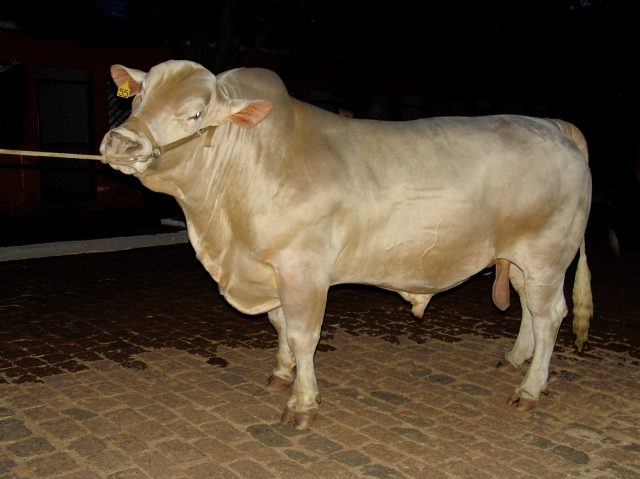Type the name of the breed you're looking for below
[wpdreams_ajaxsearchlite] Don't see the breed your're looking for? Click here and let us know!
Canchim cattle
| Place of Origin | Brazil |
| Origin | Zebu cattle (Bos Indicus), introduced to Brazil in the last century, were extensively crossbred with herds of native cattle. The Indian breed, well known for its ability to survive in the tropics, adapted quickly to Brazil, and soon populated large areas, considerably improving Brazilian beef cattle breeding. Zebu cattle were however found to be inferior to the European breeds in growth rate and yield of meat. It became clear that the beef cattle population required genetic improvement. Simply placing European beef cattle (Bos Taurus), highly productive in temperate climates, in Central Brazil, would not produce good results, due to their inability to adapt to a tropical environment. Besides the climate, other factors such as the high occurrence of parasites, diseases and the very low nutritional value of the native forage were problems. The European breed used in the formation of Canchim cattle was Charolais. In 1922 the Ministry of Agriculture imported Charolais cattle to the State of Goias, where they remained till 1936, when they were transferred to São Carlos in the State of São Paulo, to the Canchim Farm of the Government Research Station, EMBRAPA. From this herd originated the dams and sires utilised in the program of crossbreeding. The main Zebu breed which contributed to the formation to the Canchim was the Indubrazil, although Guzerá and Nelore cattle where also used. Preference was given to the Indubrasil breed, due to the ease of obtaining large herds at reasonable prices, which would have been difficult with Gir, Nelore or Guzerá. The alternative crossbreeding programs initiated in 1940 by Dr. Antonio Teixeira Viana had the objective of obtaining first, crossbreeds 5/8 Charolais and 3/8 Zebu and second, 3/8 Charolais x 5/8 Zebu, to evaluate which of the two was the most successful. The total number of Zebu cows utilized to produce the half-breeds was 368, of which 292 were Indubrasil, 44 Guzerá and 32 Nelore. All the animals produced were reared exclusively on the range. Control of parasites was done every 15 days and the animals were weighed at birth and monthly. The females were weighed up to 30 months and the males up to 40 months. The data collected during various years of work, permitted an evaluation of the various degrees of crossbreeding. The conclusion was that the 5/8 Charolais and 3/8 Zebu was the most suitable, presenting an excellent frame for meat, precocious, resistance to heat and parasites, and a uniform coat. The first crossbred animals, 5/8 Charolais and 3/8 Zebu, were born in 1953. Thus was born a new type of beef cattle for Central Brazil, with the name CANCHIM, derived from the name of a tree very common in the region where the breed was developed. It was not until 1971 that the Brazilian Association of Canchim Cattle Breeders (ABCCAN) was formed, and on 11 November 1972 the Herd Book was initiated. On 18 May 1983 the Ministry of Agriculture, recognized Canchim type cattle as a Breed. |
| Purpose | The Canchim breed is a breed of beef cattle developed in Central Brazil. |
| Appearance | Large with varied colours. |
| Horns | Naturally polled (hornless) |
| Other Considerations | The early fast growing products, the result of pasture crossbred zebu cows with Canchim bulls, can be slaughtered at 18 months old if in feedlots after weaning, up to 24 months old if in feedlots after grazing and at 30 months if bred exclusively grazing on the range. |



